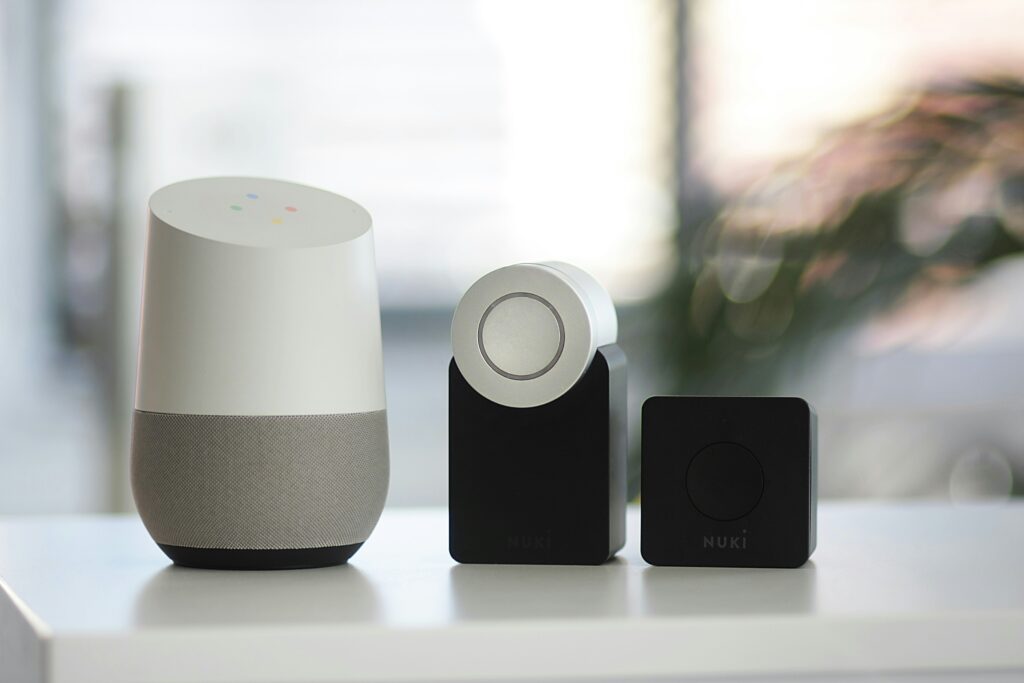In the dynamic landscape of home improvement, the concept of house extensions has evolved significantly, transcending traditional boundaries to embrace the digital age. Today’s homeowners, more tech-savvy and forward-thinking than ever, are increasingly integrating smart home technology into their house extensions.

Imagine controlling lighting, heating, and security systems with a simple voice command or tapping your smartphone. This is no longer the domain of futuristic fantasies but a tangible reality within reach in contemporary home extensions. However, this technological revolution comes with challenges, primarily balancing the lure of innovation against the practicalities of cost.
This article delves into this exciting yet complex world of smart home technology in-house extensions. We aim to guide advanced users already familiar with home improvement and technology integration through the intricacies of incorporating advanced tech solutions into their home expansion projects. We provide valuable insights and actionable advice by exploring the evolution, benefits, and cost considerations of smart home technology. Our goal is to empower you, the reader, with knowledge that informs and inspires practical application in your next home improvement venture.
Join us as we unravel the nuances of merging modern technology with traditional home extension projects, ensuring you have the information to make informed decisions that balance innovation with cost-effectiveness.
The Evolution of Smart Home Technology
The journey of smart home technology has been nothing short of revolutionary. This technology has transformed significantly from the rudimentary automated systems of the early 2000s to today’s sophisticated Internet of Things (IoT) devices. Initially, innovative technology in homes was a luxury, accessible only to those with a hefty budget. As a result, incorporating innovative technology into home improvement projects, mainly house extensions, has become a viable option for a broader range of homeowners.
This evolution has profound implications for house extension costs. Initially, integrating innovative technology into a house extension was considered extravagant, significantly driving up costs. However, with the technology becoming more mainstream, incorporating intelligent features into a house extension is relatively inexpensive. Homeowners planning a house extension can visit resources like Fittra’s House Extension Cost page for an insightful breakdown of expenses, including potential costs for adding innovative technology.
Benefits of Smart Home Technology in House Extensions
The incorporation of smart home technology in house extensions offers numerous benefits:
- Enhanced Efficiency: Smart home devices like thermostats, lighting systems, and monitors contribute significantly to energy savings. For example, smart thermostats learn your heating and cooling preferences, adjusting automatically to optimize energy use.
- Improved Security: Security is a paramount concern in any home extension. Intelligent security systems, including cameras, motion sensors, and automated locks, offer real-time monitoring and alerts, enhancing the safety of your extended living space.
- Convenience and Comfort: The ultimate luxury of smart home technology is convenience. Whether it’s controlling the lighting, adjusting the temperature, or managing entertainment systems, these tasks can be performed remotely, offering unparalleled comfort and ease.
- Future-Proofing the Home: Integrating innovative technology in house extensions is not just about immediate benefits; it’s also about future-proofing your property. As technology evolves, homes with innovative features will likely remain relevant and in demand.
- Customization and Personalization: Smart home technology allows homeowners to customize and personalize their living spaces to an extent previously unimaginable. The options are endless, from ambiance settings for different occasions to personalized security features.
Cost Analysis and Budgeting for Smart Technology in Home Extensions
Incorporating innovative technology into house extensions is an investment that requires thoughtful financial planning and an understanding of the costs involved. While the initial expense might seem daunting, the long-term benefits often justify the investment. Let’s break down the cost analysis and provide tips for effective budgeting when considering innovative technology for your home extension.
Cost Breakdown of Smart Home Technology
- Initial Purchase and Installation Costs: The most obvious expense is the purchase price of smart devices and systems. Installation costs vary based on the system’s complexity and whether professional help is needed.
- Ongoing Operating Costs: Consider the operating costs, which include maintenance and energy usage. While innovative technology is designed to be energy-efficient, it’s essential to account for these ongoing expenses in your overall budget.
- Upgrade and Replacement Costs: Technology evolves rapidly, and future upgrades or replacements might be necessary to keep your system up-to-date. Planning for these potential costs is crucial.
Budgeting for Smart Technology
- Research and Compare Prices: Start by researching the various smart home technologies available and compare their prices. Don’t just look at the upfront costs; consider the quality, warranty, and long-term savings.
- Prioritize Based on Needs and Budget: Decide which innovative features are most important to you. For instance, if energy efficiency is a priority, investing in a smart thermostat and energy-efficient lighting might be more beneficial than other gadgets.
- Seek Professional Advice: Consult with professionals who specialize in smart home technology. They can provide valuable insights into what systems best suit your needs and help you budget effectively.
- Consider Phased Implementation: If budget constraints are a concern, consider implementing the intelligent technology in phases. Start with the most essential features and gradually add more over time.
- Look for Incentives and Rebates: Sometimes, there are government incentives or rebates for installing energy-efficient systems in homes.
- Create a Contingency Fund: Always have a contingency fund for unexpected expenses or technological advancements you might want to adopt.
In summary, integrating smart home technology in house extensions represents a significant advancement in how we enhance our living spaces. While it requires careful consideration of the initial investment and ongoing costs, the benefits — from increased energy efficiency and security to unparalleled convenience and comfort — are undeniable. By thoughtfully analyzing costs, prioritizing needs, and budgeting strategically, homeowners can successfully incorporate these modern technologies into their extensions. Ultimately, the key is balancing embracing innovation and maintaining financial prudence, ensuring that your house extension is an innovative and sustainable investment for the future.

